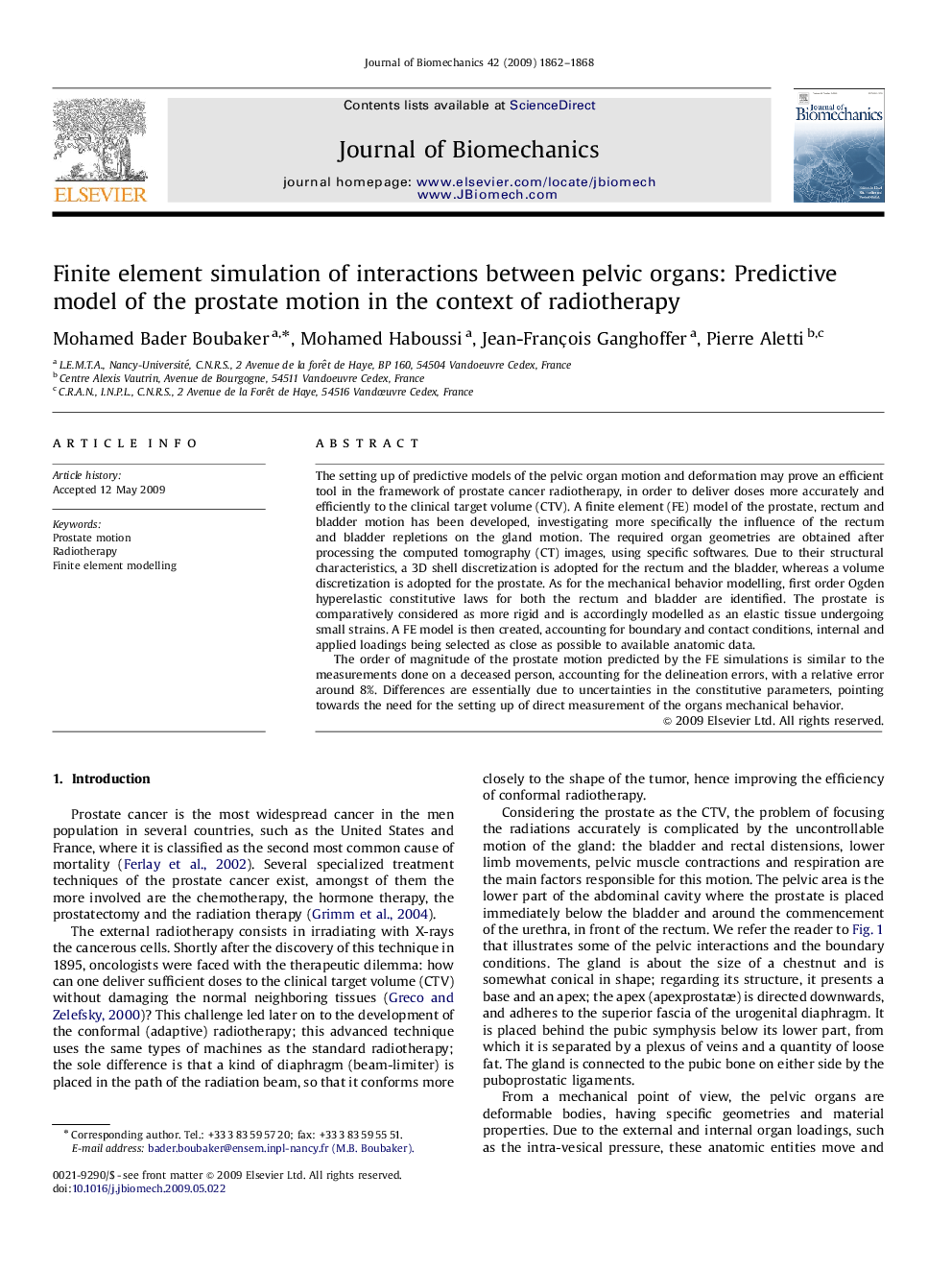| Article ID | Journal | Published Year | Pages | File Type |
|---|---|---|---|---|
| 873960 | Journal of Biomechanics | 2009 | 7 Pages |
The setting up of predictive models of the pelvic organ motion and deformation may prove an efficient tool in the framework of prostate cancer radiotherapy, in order to deliver doses more accurately and efficiently to the clinical target volume (CTV). A finite element (FE) model of the prostate, rectum and bladder motion has been developed, investigating more specifically the influence of the rectum and bladder repletions on the gland motion. The required organ geometries are obtained after processing the computed tomography (CT) images, using specific softwares. Due to their structural characteristics, a 3D shell discretization is adopted for the rectum and the bladder, whereas a volume discretization is adopted for the prostate. As for the mechanical behavior modelling, first order Ogden hyperelastic constitutive laws for both the rectum and bladder are identified. The prostate is comparatively considered as more rigid and is accordingly modelled as an elastic tissue undergoing small strains. A FE model is then created, accounting for boundary and contact conditions, internal and applied loadings being selected as close as possible to available anatomic data.The order of magnitude of the prostate motion predicted by the FE simulations is similar to the measurements done on a deceased person, accounting for the delineation errors, with a relative error around 8%. Differences are essentially due to uncertainties in the constitutive parameters, pointing towards the need for the setting up of direct measurement of the organs mechanical behavior.
